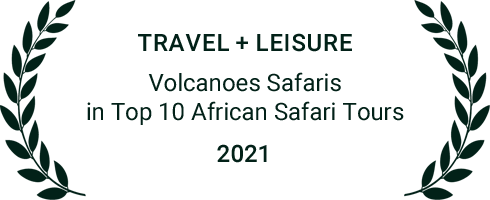I took comfort in the movie’s final scene in the forest graveyard where Fossey and her gorillas were buried. Sembagare, Fossey’s most loyal tracker, took stones surrounding her and Digit’s graves and joined them together in one circle, symbolizing the joining of their souls. I knew Rwanda was very far away and a potentially scary place, but I vowed at that moment one day to go to that graveyard in Volcanoes National Park and pay my respects to the remarkable woman who helped ensure the survival of the mountain gorillas.
Twenty-one years later I finally had the chance.
Today, Dian Fossey’s legacy - a thriving and well-protected mountain gorilla population - draws thousands of visitors to Volcanoes National Park. In addition to being able to see mountain gorillas, strong hikers can trek into the park to see the site of Dian Fossey’s original Karisoke Research Center and the mountain gorilla graveyard where Fossey and Digit still rest side by side.
My guide Jean-Paul and I started the trek at the base of the 12,175 feet Bisoke Volcano. Aptly named for its location on the saddle between Mt Karisimbi and Mt. Bisoke, the Karisoke site is visited by relatively few tourists. After going on a fully-packed gorilla trek, I relished the chance to experience the forest in silence.
The first part of journey, climbing up to the 10,000 feet saddle, was steep but not too challenging. Once we neared the top, the ground evened out and I was presented with a wide view of the forest. Clouds covered the top of Mt. Bisoke and fingers of mist reached down, brushing the tops of the trees. My guide and I heard the sound of breaking branches ahead and about 200 yards up the mountain slope I saw two gorillas crashing through the underbrush! Jean-Paul said they were members of one of eight mountain gorilla families still being monitored by Karisoke Research Center.
Heading south towards Mt. Karisimbi, the forest opened up into a grove of Hagenia trees dripping with moss and wild orchids. It was this area in 1967 that Dian Fossey set up camp and began habituating and studying Rwanda’s mountain gorillas. In her book, Gorillas in Mist, she writes, “Little did I know then that by setting up two small tents in the wilderness of the Virungas I had launched the beginnings of what was to become an internationally renowned research station eventually to be utilized by students and scientists from many countries."
Over the course of 30 years, nine different buildings were constructed on the Karisoke site as the research station expanded. Although the buildings were destroyed in the 1990s during the Rwandan genocide and the subsequent civil war, you can still see the remnants. It was eerie walking around the old house foundations covered in vines, imagining Fossey and her team discussing their research, contemplating how to stop the poaching and land encroachment that was devastating the gorilla population.
At last, my guide led me to an opening in the forest where light fell through to the ground, illuminating the wooden signs and stone markers of the gorilla graveyard. I walked around the little lichen-covered markers, making out the names of the gorillas I remembered from Gorillas in the Mist: Puck, Effie, Uncle Bert, Beetsme … and finally Digit. True enough, Dian Fossey’s grave was beside Digit’s marker. Her headstone read:
No One Loved the Gorillas More
Rest in Peace, Dear Friend
Eternally Protected
In This Sacred Ground
For You Are Home
It was amazing to finally see the place I had imagined in my mind for so many years in reality. Strangely, I did not feel sad. I couldn’t envision a more peaceful resting place than this graveyard deep inside the forest, where the sound of mountain gorillas moving through trees could still be heard more than 40 years after the founding of Karisoke. Knowing that the current Karisoke Research Center (which is located in the nearby town of Musanze) and numerous other groups were still carrying on Fossey’s conservation mission made me feel proud to be a human being.
I thought of the last words written by Fossey in her diary before her death: “When you realize the value of all life, you dwell less on what is past and concentrate on the preservation of the future.”


























